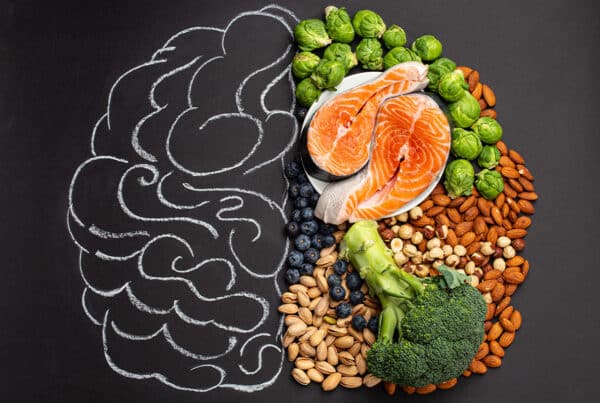By Elizabeth Weidmer-Mikhail, MD
High school and college years are full of transformational experiences, and they are often accompanied by a number of physical, mental and emotional changes. These years are also a time of experimentation, self-discovery and for many, it is when they begin to try things such as drugs and alcohol, and the addiction experts at Enterhealth, a drug and alcohol addiction treatment company, want to help parents understand some of the ways they can educate their children as they return to school.
Now, hopefully you have already had a talk or two with your child about the dangers posed by drug and alcohol use. However, as they begin to approach adulthood, it’s important that the tone of the conversation shifts from prohibitive to conversational. That is, parents need to understand that simply telling your kids not to do drugs isn’t a proper solution, the better option is to have a two-way conversation.
It’s also worth pointing out that when it comes to explaining the dangers of drug and alcohol use in young people, you don’t need to exaggerate or lie to your kids to make your point. Statistics surrounding teenage alcohol and drug use are already quite alarming.
Alcohol is the most widely abused illicit substance among teenagers, and unsurprisingly it causes the most harm. Approximately 17.6 million people – or one in every 12 adults – suffer from alcohol abuse or dependence, with several million more engaging in binge drinking that could lead to alcohol problems such as addiction. Research from the National Institute on Alcohol Abuse and Alcoholism (NIAAA) shows us that early use of substances like alcohol, marijuana and cigarettes is associated with higher rates of dependence on substances in adults.
Some statistics surrounding teen alcohol abuse include:
· Each year, teen alcohol abuse accounts for approximately 200,000 ER visits and more than 4,000 deaths among people under 21.
· 68% of 12th graders have tried alcohol – with nearly 40% of that in the last month.
· Of those 12th graders who did report drinking in the last month, 10% got behind the wheel of a car, and over 20% got into a car with a person who had been drinking.
When it comes to college-aged students, the numbers become even more startling:
· Approximately 80% of U.S. college students have abused alcohol.
· Approximately 31% of U.S. college students report symptoms of alcohol abuse.
· Approximately 18,000 college students ages 18-24 die from unintentional alcohol-related injuries, including motor vehicle accidents.
· Approximately 690,000 students ages 18-24 are assaulted by another student who has been drinking, with about 97,000 reporting alcohol-related sexual assault or date rape.
While alcohol is the most widely abused illicit drug, marijuana is used the most. In fact, recent reporting has shown that more high school seniors smoke marijuana than cigarettes at this point, and as of 2015, high school seniors are about as likely to smoke marijuana as they are to drink. Statistics from reporting support this:
· 35% of 12th graders smoked marijuana in the last year.
· 20% of 12th graders smoked marijuana in the last 30 days.
· 6% of 12th graders use marijuana every day.
· 81% of 12th graders say that marijuana is easy to obtain.
· Only 32% of 12th graders feel marijuana is harmful.
· The number of college students who smoke marijuana daily has more than tripled from 1.8 % in 1994 to 5.9 % in 2014, and is now higher than the number of college students who drink daily (4.3%).
Unfortunately, teenagers and young adults are particularly vulnerable to the effects of marijuana because their rapidly growing and maturing brains are more susceptible to damage from the drug. Regular marijuana use has been shown to lower IQ up to 8 points and decreases motivation to excel and achieve goals, as well as stripping users of their drive to be successful and competitive.
Not everyone realizes that that the teenage years are the most important time for brain development after infancy. Evidence suggests that heavy exposure to alcohol and marijuana can cause cognitive deficits, including memory problems. The part of the brain that is involved in processing social and emotional information develops early in adolescents. However, the part of the brain which involves judgment, impulse control and abstract thought isn’t fully shaped until a person’s late 20s.
Unfortunately, high school and college kids are not limiting themselves to only using alcohol and marijuana. Prescription drug abuse in schools is a serious issue, as many students have access to legal prescriptions for drugs such as study aids (Adderall, Ritalin, etc.) anti-anxiety medications (Xanax, Klonipin, etc.) and even opioid pain killers if they or a family member suffered a recent injury. Additionally, high school and college kids also have better access to street drugs than many people would imagine. These substances can include things like cocaine, methamphetamine, heroin, ecstasy and more.
The dangers of taking drugs like these seem obvious to adults, but without proper education kids are mostly oblivious to the dangers these substances pose. Many teenagers think that if a drug is prescribed by a doctor that it cannot be harmful or lead to addiction, and this is just plain wrong. Most kids don’t understand that the purity of street drugs can vary wildly, and that they can contain harmful, sometimes toxic adulterants. The drugs may not even be what is purportedly being sold, for example fentanyl or carfentanil being sold as heroin has led to many deaths in recent months.
Making sure that your teenage child steers clear of alcohol and drugs is a tricky thing to do, but the best thing a parent can do is to treat them more like an adult. That is, show them respect and let the education come in the form of a two-way conversation, not a lecture. Don’t lump everything together and don’t generalize, the more honest and open you are with your child the more they tend to listen.
Stress to them that while popular culture deems high school and college to be places of experimentation, it is not healthy and it isn’t common or normal for kids to drink alcohol or take drugs. Don’t count on the school system, teachers, other parents, or especially other teenagers to educate your kid about these facts. The younger you start having these conversations – and this doesn’t all have to happen at once – the better your chances are of getting your child to understand the realities and the dangers of alcohol and drug use.
Additional Resources:
For those interested in more information, you can visit the National Institute on Alcohol Abuse and Alcoholism (NIAAA) “Resources for Parents” page or the American Academy of Child & Adolescent Psychiatry’s “Facts for Families” guide for more information.
Enterhealth offers a evidence-based alcohol and drug addiction treatment program that was created by a team of addiction experts. Based on the latest NIH research which identifies addiction as a brain disease, this program is implemented by a staff of addiction-trained physicians, psychiatrists, nurses and therapists. Beginning with a thorough medical and psychological assessment, our medical and psychological experts craft personalized treatment plans for each patient.
If you suspect that your child or other loved one might have a problem with addiction to alcohol or drugs, you can reach the addiction specialists at Enterhealth 24 hours a day at 1.800.388.4601. You can also visit our website to learn more about treatment options, facilities and more.
Sources:
Hingson, R.W.; Zha, W.; and Weitzman, E.R. Magnitude of and trends in alcohol-related mortality and morbidity among U.S. college students ages 18 –24, 1998 –2005. Journal of Studies on Alcohol and Drugs (Suppl. 16):12–20, 2009. PMID: 19538908 http://www.ncbi.nlm.nih.gov/pmc/articles/PMC2701090/
Hingson R, Heeren T, Winter M. et al. Magnitude of alcohol-related mortality and morbidity among U.S. college students ages 18–24: changes from 1998 to 2001. Annual Review of Public Health 26: 259 –279, 2005. PMID: 15760289 http://www.ncbi.nlm.nih.gov/pubmed/15760289
Teens are Using Drugs in High School. (2017, June 15). Drug Use In High School: Facts & Statistics About Teens. Retrieved August 23, 2017, from https://www.therecoveryvillage.com/teen-addiction/high-school-drug-use/#gref
College Drinking. (n.d.). Retrieved August 23, 2017, from https://www.niaaa.nih.gov/alcohol-health/special-populations-co-occurring-disorders/college-drinking
Abuse, N. I. (2015, December 21). Drug and Alcohol Use in College-Age Adults in 2014. Retrieved August 23, 2017, from https://www.drugabuse.gov/related-topics/trends-statistics/infographics/drug-alcohol-use-in-college-age-adults-in-2014



